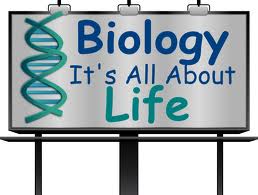
Associate Professor, School of Science, Technology, Engineering and Math at American Public University
Online introductory biology courses are traditionally designed for learning materials and assessments to be delivered via text readings, lecture notes, instructional videos, discussions, lab simulations, and quizzes and exams. The same core biology principles are covered, such as the diversity of living organisms, their structure and function, how they respond to their environment and other organisms, and their evolution and adaptations. But how can we as instructors enhance student learning, interest, and application of all the major themes of biology?
An innovative approach that works for introductory biology class for both online and traditional classrooms uses individual field trip experiences as the foundation to deliver an engaging, broad-based learning activity to enhance the traditional biology curriculum. Here is an overview of how this works at American Public University (APU), an all online university where I teach.
Students choose any organism (plant, animal, or fungus) indigenous to the area in which they reside and then observe that organism’s biological characteristics and interactions in its naturally occurring habitat. Students can visit a local state or national park, any body of water, a forest, or even their own backyards.
The students are given a list of behaviors and traits to observe and are encouraged to take photos and/or videos of their observations. The “field work” is supplemented with text-based research on the assigned topics so the students can apply the researched information to their real-world observations and ensure that those characteristics not observable are covered in the entire course project.
This field work and text-based investigation provide the necessary input for the student to complete the two graded assessments associated with the project: a formal research paper and a multimedia presentation. These two assessments cover the same organism but each assessment covers different topics. In this manner, the two assessments collectively encompass all the major learning outcomes of the course.
The first assessment, the formal research paper, covers general background information about the chosen species and its life cycle, structure and function, evolution, and other relevant biology. The goal of the paper is to cover those aspects of biology, and hence course objectives, that are not observable in their field work. This ensures that all learning outcomes are addressed between the two assessments. In addition to learning course-specific material, this written assessment sharpens each student’s research and writing skills.
The second assessment, the multimedia presentation, is a more creative, and often more engaging, learning experience for the students and its focus ecology, habitat and other relevant behaviors students may have witnessed during their observations. Using photos/ videos collected from the field work efforts and/or stock photos from internet sources, students develop a multimedia presentation. In addition to learning the remainder of the course-content objectives not covered in the formal paper, the presentation improves students’ technological and communication skills.
Students share their presentations with one another and are encouraged to discuss their overall experiences with the project and their organism and to ask each other about their experiences and organisms so as to gain a greater appreciation for the true diversity that exists in our world. At APU, our students populate all 50 states and over 100 countries so there truly IS a vast array of organisms shared via these presentations.
Student feedback has been very positive regarding this course project. In particular, students have expressed great appreciation for having the freedom to choose their organism rather than being restricted to one that is assigned. In addition, living organisms and their behaviors which were once overlooked or seen as mundane often become appreciated. Lastly, students report an overall greater appreciation for biology as a whole having participated in this project.
Real-world investigation and intellectual discovery shape and enrich the learning experiences of students. By integrating such field trip experiences, learning is connected to something tangible and allows students to synthesize traditional classroom activities with real-world experiences as they venture out to discover the local biology as it exists naturally around them. In addition to the application of biological concepts offered by this project, it contributes to the development of broad-based skills such as technology use, research, communication, and writing. And, of course, the students are afforded the opportunity to appreciate the study of life by allowing them to make direct observations and documentations of the living world surrounding them.
[Article originally posted on ED News Daily]
About the Author
Dr. Tricia S. Keiter is an associate professor in the School of Science, Technology, Engineering and Math at American Public University. She completed her undergraduate studies (B.S. in psychology, 1994) at the University of Florida before earning her doctorate degree in chiropractic from Life University in Marietta, Georgia in 1999.
Comments are closed.